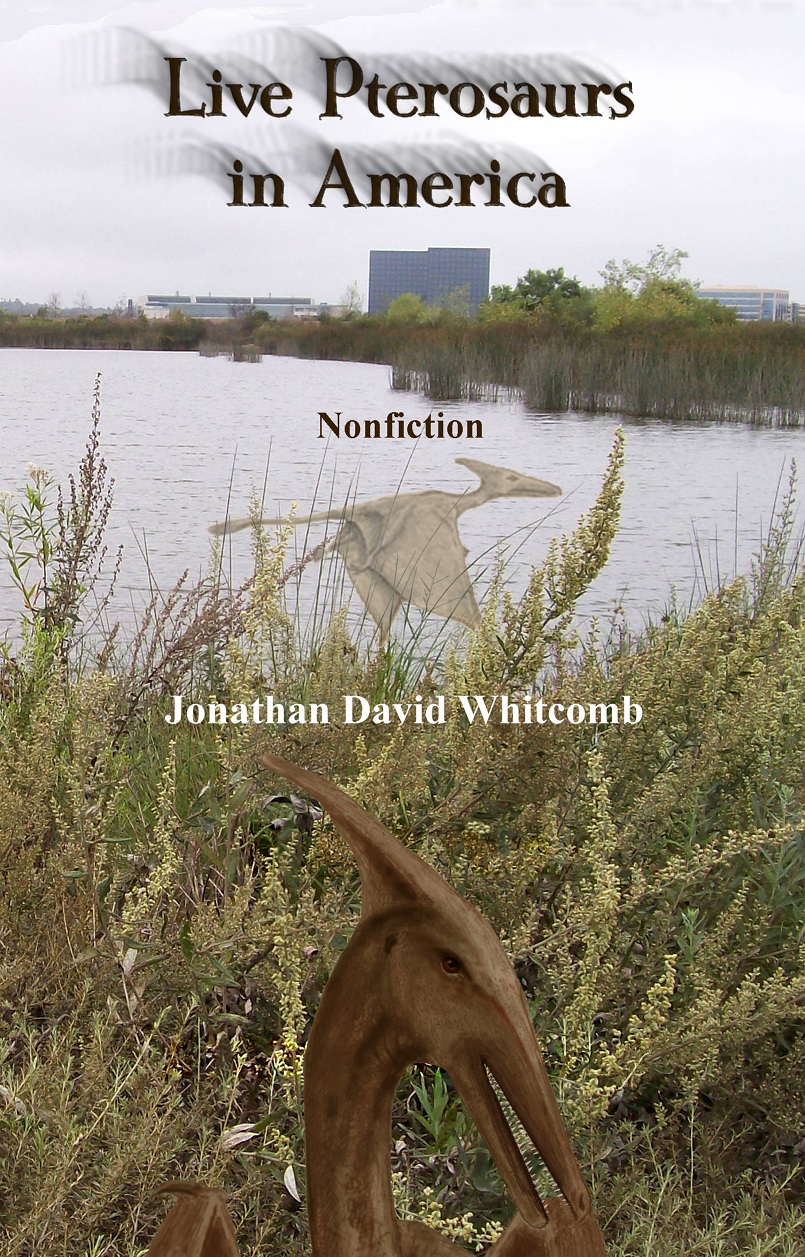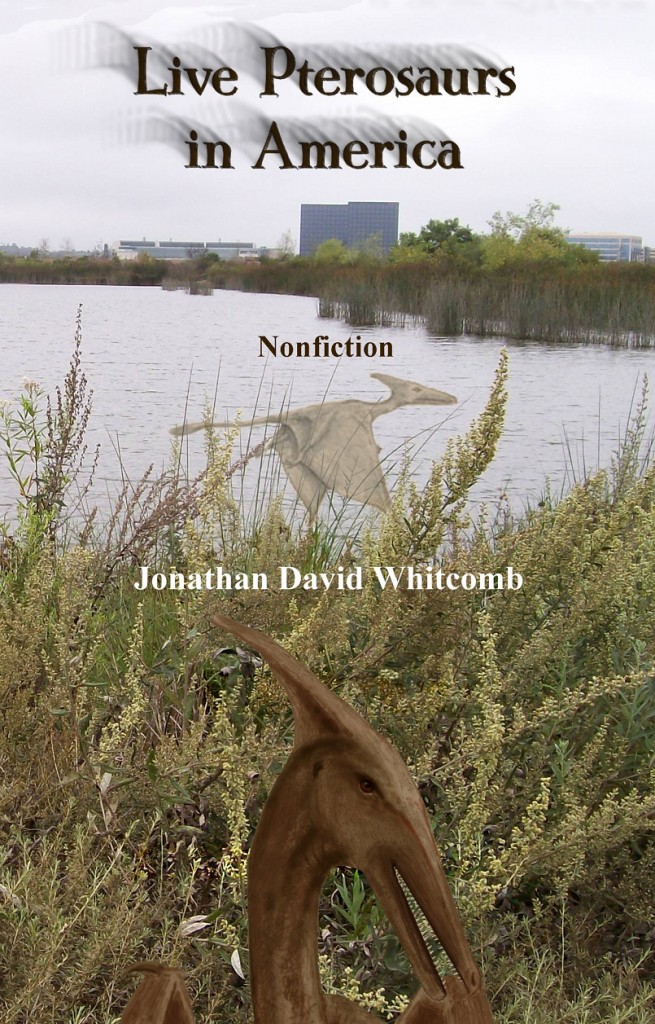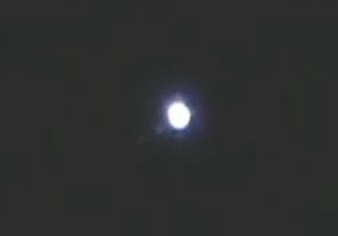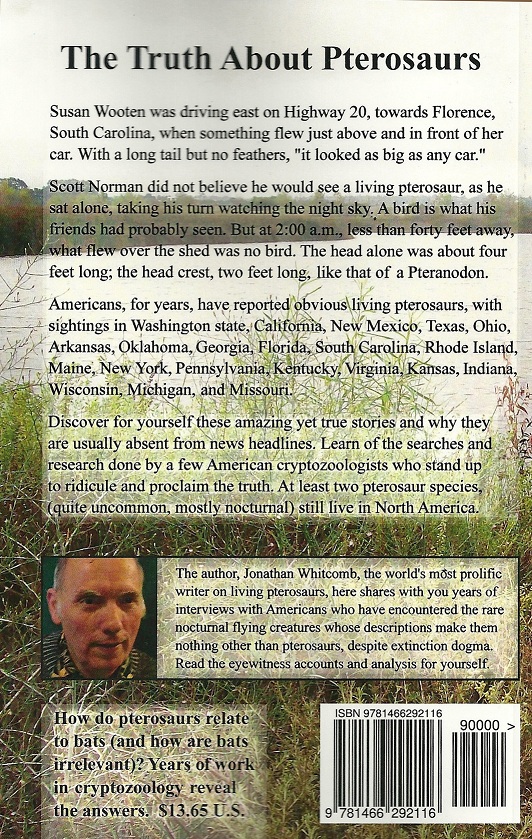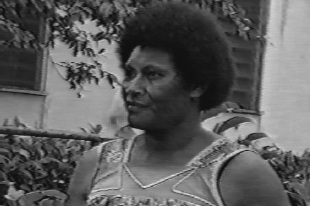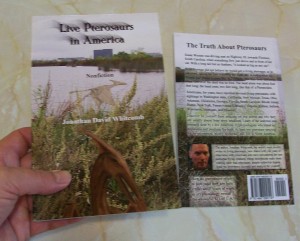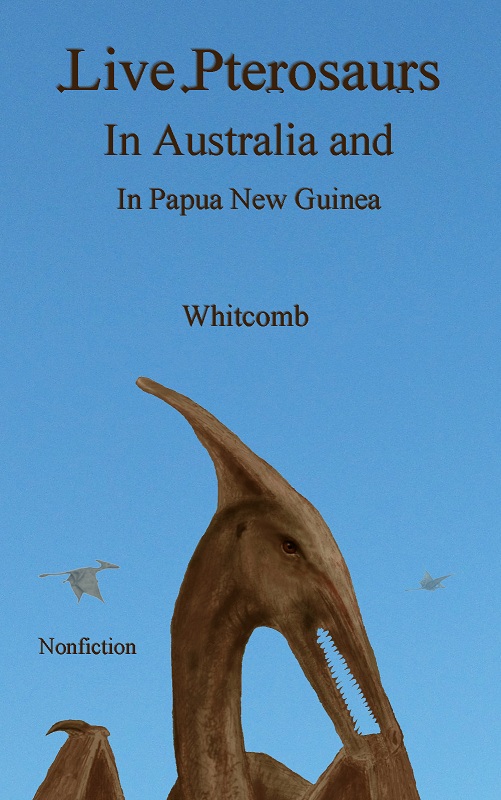Nobody has spent more hours actively investigating Marfa Lights in the field than James Bunnell, who lives in Texas. He has accumulated much valuable data on sightings of the truly mysterious lights, the ones that are clearly not related to car headlights. He deserves far more acclaim than he has received, from the majority of those who have written about Marfa Lights. I highly recommend his book Hunting Marfa Lights.
But he is a rocket scientist, literally, not a biologist, so I do not expect him to quickly drop his hypothesis of hot plasma bubbles and jump onto the back of a large bioluminescent flying creature. “Not everybody embraces a live pterodactyl,” as I put it.
In his discussion “What is the source of Marfa Lights?” he states:
ML locations vary between events but appear to be associated with fault lines in Mitchell Flat based on triangulation and estimation of locations for 17 MLs . . .
But I was struck by the labels on two of those fault lines: Little Goat Creek Fault and Walnut Creek Fault. Notice the word “creek.”
Flying Creatures, Storm Channels, and Old Creeks
Like Mr. Bunnell, I have studied a strange phenomenon in my home state. I strongly suspect that there is no coincidence in the similarities of our findings about objects in the air. Both of us have investigated strange things that fly over old stream beds, his in Texas, mine in California.
Earlier this year, I noticed that many sightings of strange flying creatures (not likely birds, probably ropens) in Southern California have a close association with storm channels and old creek beds.
In fact, some of those sightings involve glowing creatures with large wingspans in, of all places, Los Angeles County, the home of Hollywood. Take the sighting of a couple on a walk, in 2009, in the San Fernando Valley (Sherman Oaks area) of Southern California; it has no relationship with plasma. The following is taken from the third edition of my book Live Pterosaurs in America:
“It was a very large, winged creature that was gliding maybe 100 yards above us. We stared at the creature in disbelief because it was so strange . . . it didn’t look like a bird really. . . my girlfriend has 20-20 vision and she told [me] a few minutes later that it had lights on it.”
I asked, “How was it unlike a bird?” He replied that it was bigger, was not flapping its wings . . . and its wings were deeper from leading edge to trailing edge. He estimated the wingspan at ten to fifteen feet, mentioning that his girlfriends estimate was twenty feet. The wings were more bat-like than bird-like.
Another sighting in the San Fernando Valley also involved a large glowing flying creature of the night (whether or not a ropen):
“It was late in the evening, almost dark . . . I was walking from my car to my house (Sun Valley) and something in the sky caught my eye. My girlfriend also looked up and right away said, ‘Is that a bat?’ But she wears glasses so she has trouble seeing how close objects are. What caught my eye was the bright radiation like light coming from the belly of this Pterodactyl looking animal. I seen it fly right above us maybe 150-200 feet and this thing wasn’t no bat; it was bigger with large wing span . . .”
Neither of those sightings were far from any stream bed or storm channel, although they were at least hundreds of feet away. But what about other sightings of apparent pterosaurs in Southern California, in which the flying creatures were only feet away from a storm channel, or only inches? Those extremely close associations with storm channels—that were probably once old stream beds—those are surely not by coincidence. The winged things probably hunt prey by flying through or alone them, as they look for rats or possums or other tasty snacks.
Nocturnal flying creatures that resemble pterosaurs are sometimes observed in daylight or twilight. In Southern California sightings, I see a reasonable correlation with storm channels and I believe those were once stream beds. What better place to construct a storm channel?
I suggest a similar species of winged creature—probably not any bird—flies close to stream beds in southwest Texas, for similar reasons: hunting prey. I can see how Mr. Bunnell noticed the underlying original source of the stream beds around Marfa (faults), but the stream beds themselves are surely what causes the correlation with CE-III’s, not the faults.
Reports of Apparent Pterosaurs in Texas
I long ago lost count of the eyewitness accounts, and other reports, I have seen of possible pterosaurs in Texas. I have also received many sighting reports from surrounding states, including New Mexico, Arkansas, and Oklahoma. Most of the sightings are clearly of non-birds, winged creatures too big to be bats.
I suspect that most of those who have researched and investigated the more mysterious of the lights that fly over the Mitchell Flat area—those persons have no idea how many Texans have reported seeing large flying creatures at night, things with wings but which look unlike birds and bats. And many persons in the Southern states seem to have witnessed flying creatures that glow at night.
Explanation for CE-III Marfa Lights
James Bunnell has given us precise categories of Marfa Lights, including the subtype “III” of chemical-electromagnetic flying entities (which are less than 3% of the lights that could be called strange in that part of Texas). He has suggested that hot plasma can behave in complex ways, but in “What is the source of Marfa Lights?” he does not give any particular reason for splitting-separating-rejoining behavior.
The Bioluminescent Flying Predators (BFP) concept explains the precise nature of the complex behaviors of the CE-III Marfa Lights. Some of those behaviors are well explained as hunting techniques for catching the Big Brown bat, a common bat in this part of Texas. One of those methods has been explained in detail, on a number of web pages, notwithstanding few non-biologists have given it much attention.
This biological interpretation of the actively flying Marfa Lights is the simplest and best explanation for the apparent splittings, separations, and rejoinings of CE-III ML’s. The bioluminescence exhibited by the flying creatures is more active than that of other glowing creatures, but it seems to be similar to what is described in Papua New Guinea, in what we call the “ropen.”
###
.
Bioluminescent Flying Predators of Marfa
Two of the BFP’s . . . are close to each other, using the glow to attract insects that in turn could attract the Big Brown bat . . . it appears to us that a light is splitting into two lights; they were always two objects.
Marfa Lights – A Living Nightmare?
What could be worse than any nightmare? In the dead of night, you are awakened by what you fear most, glaring down at you. To humans, this monster should not even exist except in a dream. This one is real. Race out of your bedroom; it’s after you. Race out the front door; it follows. Search for a place to hide; it’s too late. You are exposed, surrounded by many monsters ready to feast. You have fallen into their trap. Your family is scattered, chased across the freezing countryside. You are alone. You are Eptesicus fuscus, a Big Brown Bat.
To paraphrase Nicola Tesla, the modern scientist needs, rather than deep thinking, clear thinking. I suggest that investigators need to recognize evidence of intelligence rather than require interpretations involving non-intelligence, regarding the CE-III mystery lights of Marfa, Texas.
.
Third edition of Live Pterosaurs in America by Jonathan David Whitcomb
First paragraph of the Introduction:
This book might make a few Americans uneasy to walk alone at night; my intention, however, is not to frighten but to enlighten as many readers as possible to know about live-pterosaur investigations. Those who’ve been shocked at the sight of a flying creature that “should” be extinct—those eyewitnesses, more numerous than most Americans would guess, need no longer be afraid that everyone will think them crazy, and no longer need they feel alone. Those of us who’ve listened to the American eyewitnesses, we who have interviewed them, we now believe. So, if you will, consider the experiences of these ordinary persons (I’ve interviewed most of them myself) and accept whatever enlightenment you may.
.



